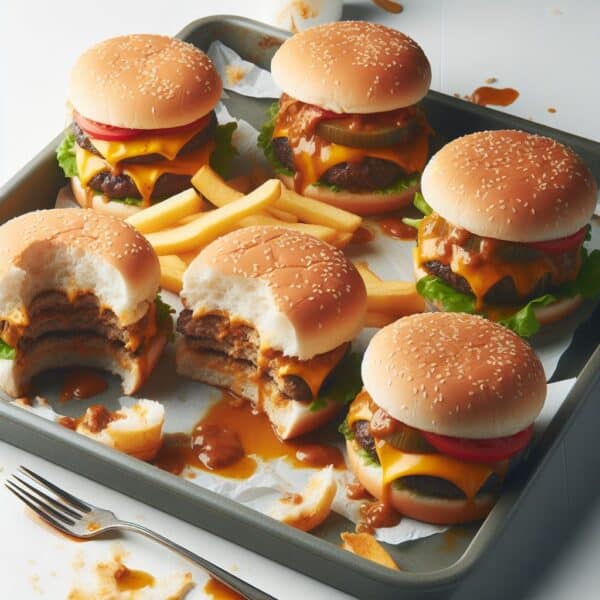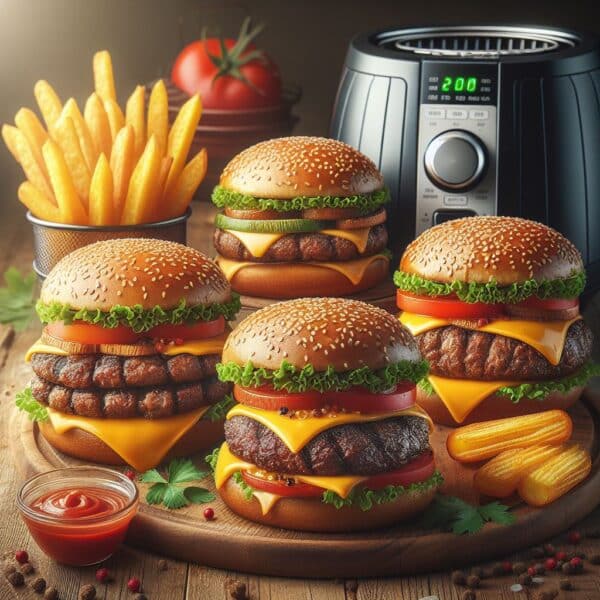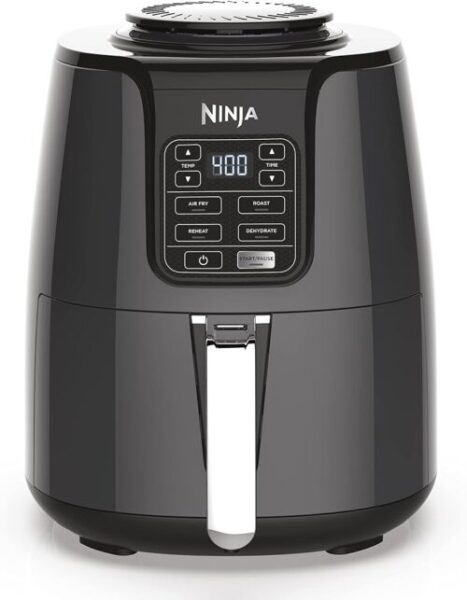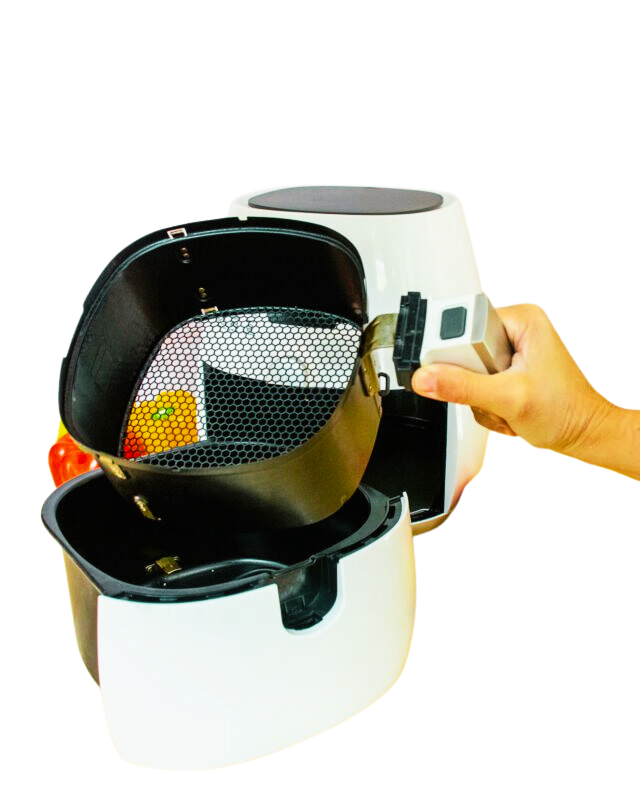Introduction
Welcome to Quickfryer, where our commitment to culinary excellence meets the convenience of your kitchen. In this guide, we unravel the secrets behind mastering the reheating process for leftover burgers using your air fryer. Quickfryer stands as your trusted ally, providing you with a step-by-step roadmap to elevate your leftovers to a whole new level of flavor and texture.
Table of Contents
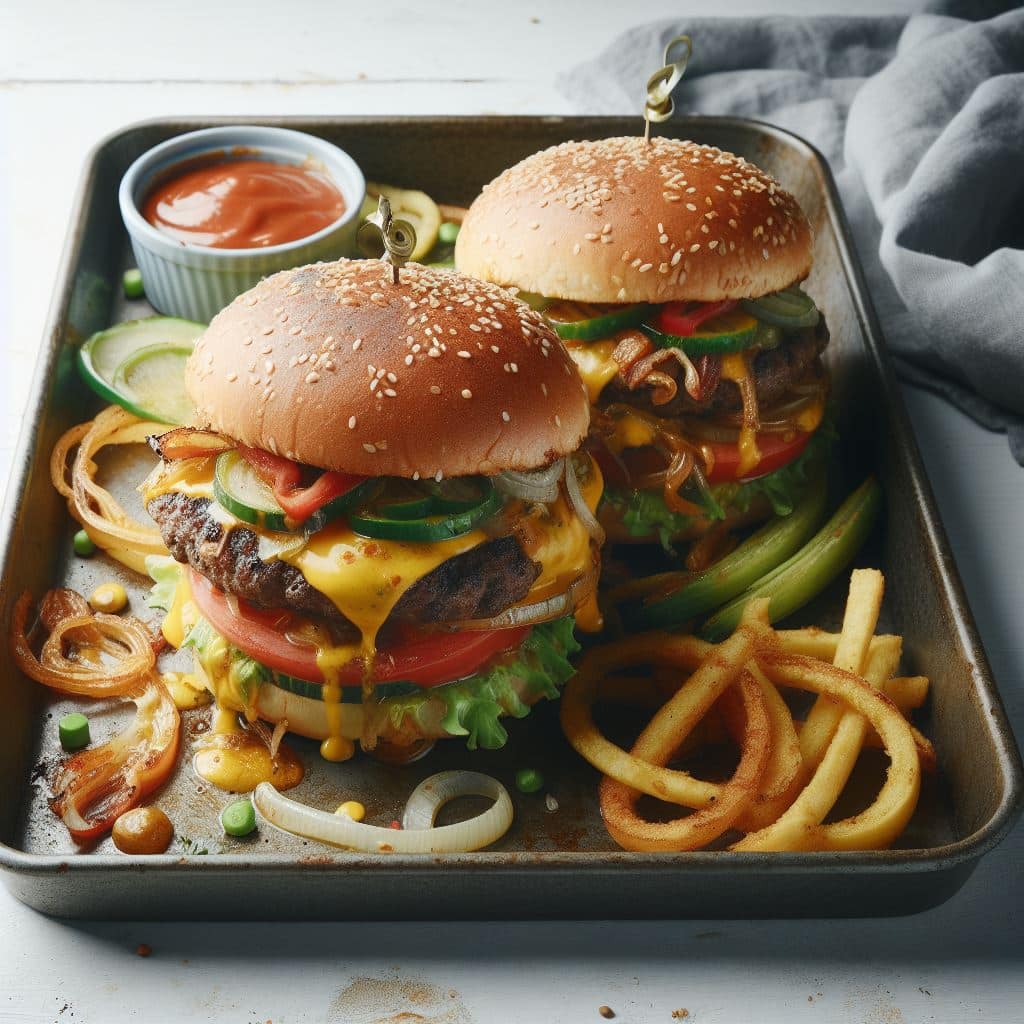
The Air Fryer Advantage
Why Opt for an Air Fryer?
The choice of the right reheating appliance can make a significant difference, and here’s why an air fryer is our top pick. Air fryers utilize hot air circulation, mimicking the effects of deep frying without the excessive use of oil. This not only ensures a crispy exterior but also retains the juiciness within, making them an ideal choice for reheating burgers.
Benefits of Using an Air Fryer for Reheating
Beyond the crispy magic, air fryers offer a range of benefits for reheating purposes. They are quick, efficient, and versatile, allowing you to customize settings for different types of food. The controlled environment inside the air fryer ensures an even reheating process, eliminating the risk of unevenly heated leftovers.
Preparation Essentials
Navigating Your Air Fryer Settings
To embark on your reheating journey, it’s crucial to acquaint yourself with the intricate settings of your air fryer. Take a moment to explore the temperature controls and timer options unique to your appliance. Understanding these settings will empower you to tailor the reheating process according to the specifics of your leftover burgers.
The Importance of Preheating
Much like any culinary endeavor, preheating your air fryer sets the stage for success. This preliminary step ensures that your leftover burgers enter a hot, conducive environment for an even and efficient reheating process. Allow your air fryer a few minutes to reach the desired temperature before introducing your culinary masterpieces.
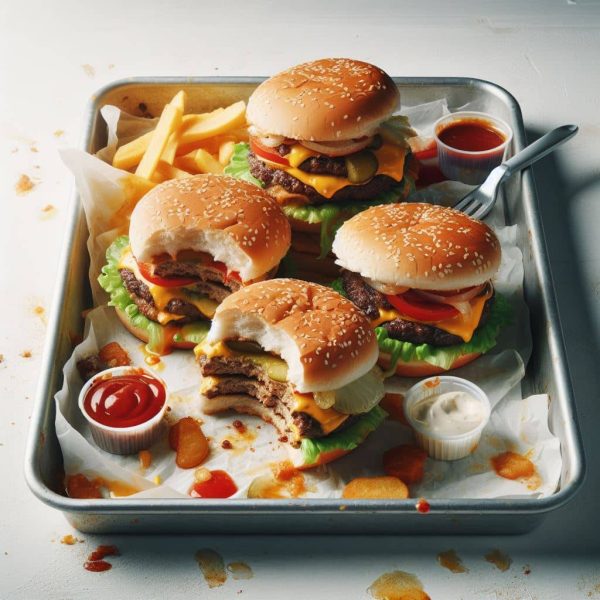
Types of Leftover Burgers
When it comes to leftover burgers, the possibilities are endless. From classic cheeseburgers to gourmet creations adorned with bacon and avocado, each variation presents its own reheating considerations. Here’s a brief overview of reheating burgers with different toppings and how they might affect the process:
Classic Cheeseburgers
Classic cheeseburgers are a timeless favorite, but reheating them requires a delicate balance to ensure that the cheese remains melty without becoming overly greasy. To achieve optimal results, consider adding the cheese towards the end of the reheating process. This allows the burger to heat evenly while ensuring that the cheese reaches its perfect state of gooey goodness just as the burger is ready to be served.
Bacon-Topped Burgers
Bacon adds a savory crunch to burgers, but reheating bacon-topped patties requires special attention to prevent the bacon from becoming too crispy or losing its flavor. When reheating burgers topped with bacon, it’s essential to monitor the cooking time closely. Consider covering the burgers with foil during the initial stages of reheating to prevent the bacon from drying out, then uncover them towards the end to allow the bacon to crisp up slightly.
Avocado and Other Fresh Toppings
Fresh toppings like avocado, lettuce, and tomato can add a burst of flavor and texture to leftover burgers, but they can also become wilted or soggy if reheated improperly. To preserve the freshness of these toppings, consider removing them from the burger before reheating and adding them back on once the burger is heated through. Alternatively, you can place the fresh toppings on the burger during the last few minutes of reheating to warm them slightly without compromising their texture.
Specialty Toppings and Sauces
Specialty toppings and sauces, such as caramelized onions, barbecue sauce, or aioli, can elevate leftover burgers to gourmet status. However, reheating burgers with these toppings requires careful consideration to prevent them from becoming too dry or losing their flavor. To preserve the integrity of specialty toppings and sauces, consider adding them back onto the burger towards the end of the reheating process or serving them on the side for dipping or drizzling.
By tailoring the reheating process to the specific toppings adorning your leftover burgers, you can ensure that each bite is as delicious and satisfying as it was when the burger was freshly made. Experiment with different reheating techniques and topping combinations to discover your perfect reheated burger masterpiece.
Reheating Different Burger Types
While classic cheeseburgers, bacon-topped patties, and burgers with fresh toppings are undoubtedly delicious, there exists a vast array of burger variations that cater to different dietary preferences and flavor profiles. Exploring these variations and understanding how to properly reheat them ensures that every burger lover can enjoy their favorite patty, whether it’s made from beef, turkey, or plants.
Veggie Burgers
Veggie burgers, made from ingredients like beans, lentils, mushrooms, or vegetables, offer a flavorful and nutritious alternative to traditional meat-based burgers. When reheating veggie burgers, it’s essential to preserve their texture and prevent them from becoming dry or crumbly. Consider using a slightly lower temperature and reheating for a shorter duration compared to meat-based burgers to avoid overcooking. Additionally, wrapping veggie burgers in foil or adding a small amount of moisture, such as a splash of vegetable broth or water, can help retain their moisture during reheating.
Turkey Burgers
Turkey burgers are a leaner alternative to beef burgers, offering a lighter option without sacrificing flavor. However, due to their lower fat content, turkey burgers can easily dry out if reheated improperly. To prevent this, consider reheating turkey burgers at a slightly lower temperature than beef burgers and covering them with foil during the initial stages of reheating to trap moisture. Adding a small amount of olive oil or turkey broth to the burger before reheating can also help maintain juiciness.
Burgers with Specific Cheeses
Burgers topped with specific cheeses, such as blue cheese, brie, or goat cheese, offer a gourmet twist on the classic cheeseburger. When reheating burgers with these cheeses, it’s essential to consider the melting properties of the cheese to ensure it retains its creamy texture and flavor. Reheating at a lower temperature and for a shorter duration can prevent the cheese from becoming overly gooey or burnt. Alternatively, adding the cheese towards the end of the reheating process or covering the burger with foil during reheating can help preserve the integrity of the cheese.
By understanding the unique characteristics of different burger types and making slight adjustments in temperature, timing, and moisture levels during reheating, you can ensure that each burger retains its deliciousness and satisfies your cravings. Experimenting with reheating techniques tailored to each burger variation allows you to enjoy a diverse range of flavors and textures, elevating your burger experience to new heights.

Reheating Burgers with Sauces
Sauces play a pivotal role in enhancing the flavor profile of burgers, but reheating burgers with sauces requires careful consideration to prevent the sauces from becoming runny, separating, or burning. Whether it’s BBQ sauce, mayo, ketchup, or any other condiment, maintaining the integrity of the sauce ensures that each bite of the reheated burger is as flavorful as the first.
Tips for Reheating Burgers with Sauces:
Add Sauces Towards the End: One effective strategy is to add the sauces towards the end of the reheating process. This allows the burger to heat through without subjecting the sauce to prolonged exposure to heat, which can cause it to thin out or lose its flavor. Simply warm the burger until it’s almost fully reheated, then add the sauces on top before completing the reheating process.
Reheat Sauces Separately
Another option is to reheat the sauces separately from the burger. This ensures that the sauce maintains its consistency and flavor without being affected by the reheating process of the burger itself. You can warm the sauces gently on the stovetop or in the microwave, then drizzle or spread them over the reheated burger just before serving.
Use Foil to Protect Sauces
If reheating the burger with the sauce already applied, consider covering the burger with foil during the initial stages of reheating. This helps to trap moisture and heat around the burger, preventing the sauce from evaporating or burning. Towards the end of the reheating process, remove the foil to allow the sauce to thicken slightly and meld with the other flavors of the burger.
Consider Sauces with Thickening Agents
Opt for sauces that contain thickening agents, such as mayonnaise-based sauces or BBQ sauces with a higher viscosity. These sauces tend to hold up better during reheating, maintaining their texture and flavor without becoming watery or separating.
By implementing these tips, you can ensure that the sauces on your reheated burgers retain their deliciousness and complement the flavors of the burger without compromising their taste or texture. Experiment with different reheating methods and sauce application techniques to find the approach that works best for your favorite burger creations.
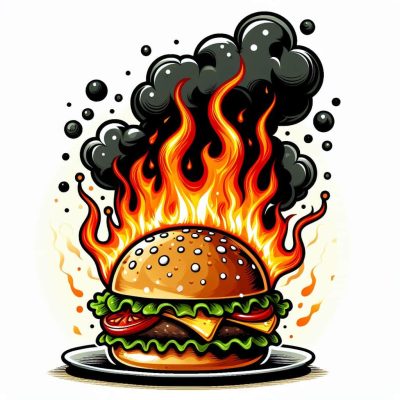
Reheating Process Demystified
Strategic Removal of Condiments and Toppings
Before your burgers meet the warm embrace of the air fryer, it’s time for a strategic move. Remove any condiments and toppings that might contribute to sogginess during reheating. This simple step ensures that the reheating process focuses on restoring the burger’s original texture without compromising its integrity.
Brushing with Oil for Superior Crispiness
For those who appreciate an extra layer of crispiness, consider the brush-and-crisp technique. Lightly brush your burgers with a touch of cooking oil before they enter the air fryer. While optional, this step adds a delightful crunch to the exterior, elevating your reheated burgers to gourmet status.
Artful Arrangement in the Air Fryer
Once condiments are removed and a touch of oil is applied, it’s time for an artful arrangement in the air fryer basket. Lay your burgers in a single layer, ensuring ample space between each. Avoid overcrowding, as proper air circulation is the key to achieving that coveted crispy exterior during reheating.
Setting the Perfect Temperature and Time
Precision is paramount when it comes to setting the temperature and time for reheating. Adjust the air fryer temperature to approximately 350°F (175°C). The exact time may vary based on burger thickness, but a general guideline is 3-5 minutes. Regularly check for doneness to prevent overcooking and adjust accordingly.
Internal Temperature Safety
Ensuring the safety of your reheated burgers goes beyond achieving the perfect texture and flavor. It’s essential to guarantee that the internal temperature reaches a safe level to eliminate any potential risks associated with undercooked meat.
Before serving your reheated burgers, it’s crucial to check the internal temperature using a food thermometer. The recommended temperature for cooked ground beef, including burgers, is 165°F (74°C). This temperature ensures that any harmful bacteria present in the meat are killed, making the burger safe for consumption.
By incorporating this simple step into your reheating process, you can enjoy your leftover burgers with peace of mind, knowing that they are both delicious and safe to eat. Remember, food safety is paramount, and a food thermometer is your trusted tool for achieving it.

Reheating Multiple Burgers
When reheating multiple burgers at once in an air fryer, it’s essential to make adjustments to ensure that all burgers are heated through evenly while maintaining their desired texture and flavor. Proper spacing, temperature adjustments, and avoiding overcrowding the air fryer basket are key factors in achieving optimal results.
Tips for Reheating Multiple Burgers
Even Spacing in the Air Fryer Basket
Arrange the burgers in the air fryer basket in a single layer with even spacing between each burger. This allows for proper air circulation around each burger, ensuring that they are heated through evenly from all sides.
Temperature Adjustment
Consider increasing the overall cooking temperature slightly when reheating multiple burgers to compensate for the larger quantity of food in the air fryer. A slightly higher temperature helps to maintain consistent heat distribution and ensures that all burgers reach the desired internal temperature without overcooking or undercooking.
Increased Cooking Time
Adjust the cooking time to accommodate the larger quantity of burgers. While the cooking time may vary depending on the thickness of the burgers and the specific air fryer model, increasing the overall cooking time slightly ensures that all burgers are heated through evenly and reach the desired level of doneness.
Avoid Overcrowding the Basket
Avoid overcrowding the air fryer basket with too many burgers at once, as this can impede proper air circulation and result in uneven reheating. If necessary, cook the burgers in batches to ensure that each burger has sufficient space for air to circulate around it.
Monitoring and Adjusting:
- Monitor the burgers closely during the reheating process and adjust the cooking time or temperature as needed to prevent overcooking or undercooking.
- Consider flipping the burgers halfway through the reheating process to promote even cooking and browning on both sides.
By following these tips and making necessary adjustments, you can ensure that all burgers are reheated evenly, maintaining their deliciousness and texture. Experiment with different spacing and temperature settings to find the optimal configuration for reheating multiple burgers in your air fryer.
Avoiding Overheating
Properly reheating burgers in an air fryer requires attention to detail to avoid the risk of uneven cooking or burning. Flipping the burgers halfway through the reheating process is a simple yet effective technique that promotes even heat distribution and ensures that both sides of the burger achieve the desired texture and color.
Flipping Burgers for Even Reheating
Promoting Even Heat Distribution
Flipping the burgers halfway through the reheating process helps to distribute heat more evenly, ensuring that both sides of the burger are exposed to the hot air circulating in the air fryer. This prevents one side from becoming overly crispy or burnt while the other side remains undercooked.
Preventing Uneven Cooking
Without flipping, the side of the burger that is in direct contact with the air fryer basket may cook faster and become crispier than the side facing upwards. Flipping the burgers ensures that both sides receive equal exposure to the circulating hot air, resulting in uniform reheating and a consistent texture throughout the burger.
Achieving Golden-Brown Color
Flipping the burgers halfway through the reheating process also allows both sides of the burger to achieve that desirable golden-brown color and crispiness. This enhances the visual appeal of the burger and adds to the overall eating experience.
Tips for Flipping Burgers:
- Use a spatula or tongs to carefully flip the burgers halfway through the reheating process. Be gentle to avoid damaging the burger or causing toppings to shift.
- Ensure that the burgers are cooked to the desired doneness before flipping. If the burgers are not fully reheated on one side, flipping prematurely may disrupt the cooking process and result in uneven reheating.
- Monitor the burgers closely during the flipping process to prevent them from burning or becoming overly crispy. Adjust the temperature or cooking time if necessary to achieve the desired level of doneness.
By incorporating the simple step of flipping the burgers halfway through the reheating process, you can ensure that your burgers are evenly reheated, perfectly golden-brown, and irresistibly delicious.
Leftover Storage Wisdom
Maximizing Freshness in the Refrigerator
Before even thinking about reheating, the foundation lies in how you store your leftover burgers. Opt for an airtight container in the refrigerator to keep them as fresh as the day they were crafted. This not only prevents drying but also retains the original flavors, ensuring a delightful reheating experience.
Unlocking Longevity through Freezing
For those times when immediate consumption isn’t on the horizon, freezing becomes your culinary ally. Individually wrap your burgers in plastic and store them in a freezer bag. This method extends the shelf life, allowing you to savor the goodness of your burgers weeks after their creation.
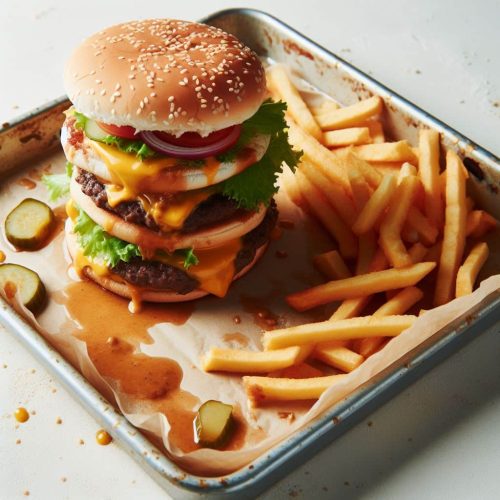
Soggy Buns
As we embark on the journey of reheating leftover burgers in our trusty air fryer, let’s not forget about the unsung hero of the burger ensemble – the bun. There’s nothing quite like sinking your teeth into a perfectly toasted bun, and we wouldn’t want to overlook its contribution to the overall burger experience.
To ensure your burger buns retain their integrity and achieve that coveted toasted texture without succumbing to sogginess, a bit of extra attention is warranted. Here’s a quick tip to elevate your bun game:
Reheating the burger buns separately is the key to preserving their texture while ensuring they complement the reheated patty perfectly. Consider wrapping them loosely in foil or placing them in the air fryer for a shorter duration at a slightly lower temperature compared to the burgers.
By giving your buns a moment of spotlight in the reheating process, you’ll strike the perfect balance between warmth and texture, enhancing the overall enjoyment of your revitalized burger masterpiece. So, don’t overlook the bun – it’s the final touch that elevates your burger from good to gourmet.
Conclusion
Reheating leftover burgers in your air fryer is a culinary game-changer, preserving flavor and achieving the perfect texture. Quickfryer is your go-to resource for quick and efficient cooking tips, and with these detailed steps, you can enjoy restaurant-quality burgers right at home. Experiment with our recommendations, personalize the process to your liking, and elevate your leftovers to a whole new level with the help of your trusty air fryer. Happy cooking!
FAQs
Can I reheat a burger in the air fryer?
Yes, you can reheat a burger in the air fryer. Preheat the air fryer, then place the burger in the basket. Reheat at around 350°F (175°C) for 3-5 minutes, adjusting the time as needed based on the thickness of the burger. Ensure the burger reaches an internal temperature of 165°F (74°C) for safety. Check out for more details.
How do you reheat food in an air fryer without drying it out?
To prevent drying out, lightly coat the food with oil or wrap it in foil before reheating. Additionally, consider lowering the temperature slightly and reheating for a shorter duration.
Is it better to reheat in an air fryer or microwave?
It depends on personal preference and the type of food being reheated. While the microwave is quicker, the air fryer generally produces better results, maintaining or even improving texture by crisping the exterior.
What is the best temperature to reheat food in an air fryer?
A temperature of around 350°F (175°C) is commonly used for reheating in an air fryer. However, depending on the type of food and desired outcome, temperatures may vary slightly. It’s essential to monitor the food closely to prevent overcooking.
What is the reheat button on an air fryer?
The “reheat” button on an air fryer is a preset function designed to automatically adjust the temperature and time for reheating food. However, not all air fryers have this specific button. If your air fryer doesn’t have a reheat button, you can manually adjust the settings to achieve similar results.
Can I put a plate in the air fryer?
Yes, you can put a heat-safe plate or dish in the air fryer. However, it’s crucial to ensure that the plate is compatible with the air fryer’s temperature settings and that it fits comfortably inside the basket without obstructing airflow. Using a plate can be helpful for reheating foods that may release juices or for keeping multiple items separated.

